Iceland is known as a great road-trip destination, thanks to an abundance of beautiful landscapes and an easy-to-follow route, the Ring Road, that circles the island. For those who want to make the most of their time on the road, but aren’t quite ready to rough it in a tent, exploring Iceland in a camper-van rental is a great way to go. Here’s what you need to know about planning a road trip in Iceland.
Exploring Iceland in a Camper-van
Choosing a company
There are several companies that offer camper-van rentals in Iceland, including Happy Campers, Go Campers, Camper-van Iceland, and Kuku Campers. Prices and included services can vary quite a bit, so figure out what’s most important to you, and price out options including all the extras so you can really compare apples to apples.
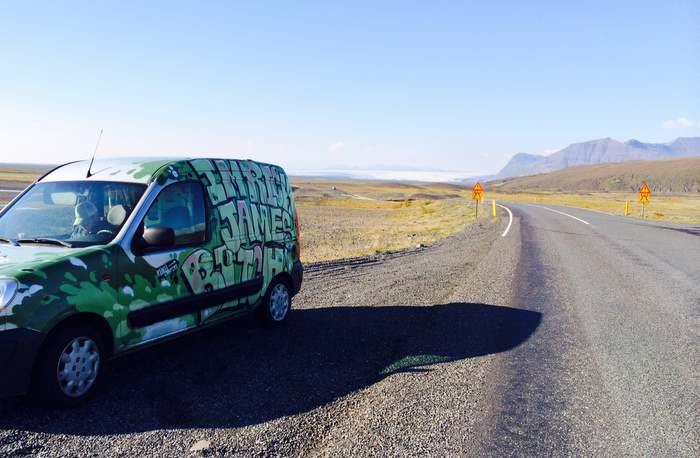
Kuku campers paint their camper-vans with unique art
For example, some camper-van companies include unlimited mileage, and some don’t. If you go over the allotted miles, the fees add up quickly, so if you plan to drive a lot every day, you may save in the long run by paying a bit more for unlimited miles. Some camper-vans include sleeping bags and others offer them at additional cost. Figure out everything you’ll need and then compare the total costs to determine the best option. If you need a break from sleeping in a camper, you can always do that. Here are some cool and quirky hotels in Iceland that are worth checking out.
Planning a route
Most people road trip Iceland by following the Ring Road, which covers 830-plus miles around the island. The full trip takes about a week at a moderate pace, however, you could easily spend just as much time exploring one corner of the country. Figure out what it is you’re after–do you want the bragging rights of having driven all the way around the country, or are you content to explore one area more in-depth–and think about how fast or slow you want your pace to be. Take whatever drive time Google maps gives you between two points, and add fifty percent. The appeal in driving a camper-van around Iceland is that you can take your time and stop wherever and whenever you want (and that’s going to be a lot!) so don’t set yourself up to be rushed.
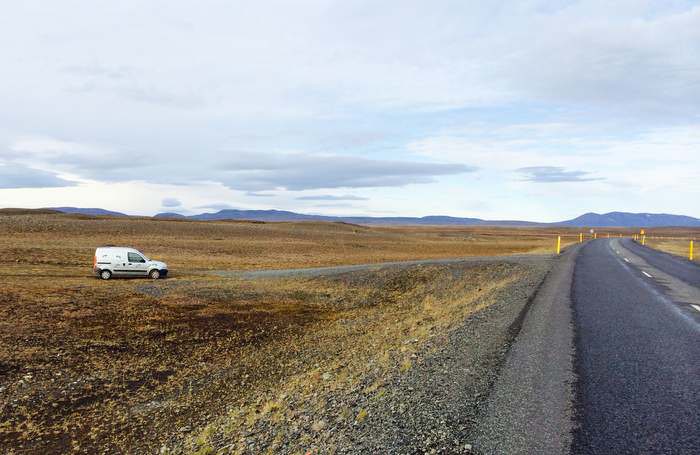
Iceland’s open roads make driving a great way to see the country
If possible, plan to finish your road trip the day before you fly home, just in case you encounter any unforeseen delays. And be sure to note any roads that are off limits; most campers aren’t allowed on F roads or highland roads as driving on these rough roads can damage the car or result in a steep fine.
What to pack
While sleeping in a campervan provides more creature comforts than camping, you’ll still need to prepare for the elements. Bring warm clothes (even in the summer, temps can plunge below 40F at night) and bring or rent a warm sleeping bag, sleeping mat, and pillows. Most companies will rent or provide a cooler, cooking utensils, and chairs, and it’s wise to bring a headlamp or flashlight for evening, a spare charger for your phone, slip-on shoes for walking around camp, a few towels, and extra toilet paper for campsite bathrooms.
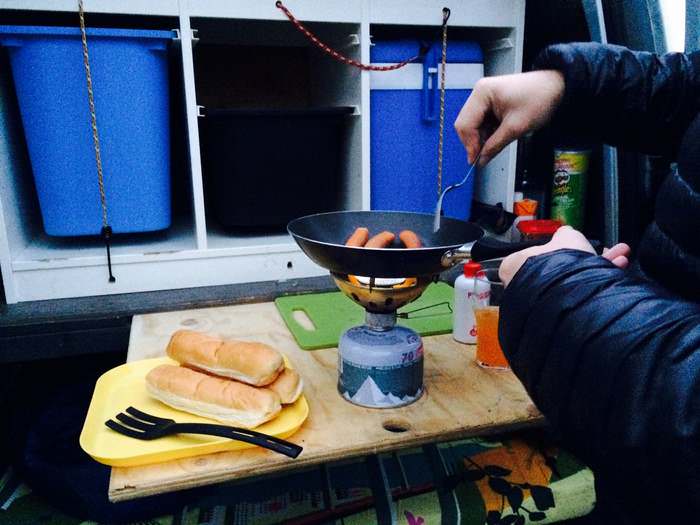
Cooking off the back of the camper-van
Don’t skimp on the necessities, but be aware that campers have limited storage space. Once you make your bed in the back, you may need to move your luggage to the front seats. Pack as light as you can, and avoid bringing a hard-sided suitcase.
Where to camp
The best part about traveling by camper-van is that you don’t have to plan in advance; you can decide on the fly where and when to call it a day. In most cases, wild camping is legal in Iceland, but it’s meant to offer refuge for travelers in case of emergency, not an excuse for tourists to set up camp anywhere they want. If you must pull over somewhere other than a designated campsite, be extremely respectful and be sure not to litter or leave anything behind. Here is some current information on Wild Camping:
The laws had to change due to the fact that Iceland has more than 1 million travelers a year now. Wild camping is destroying the land and experience for others. And, it is absolutely forbidden to camp in Urban areas. “It is not permissible to stay overnight in tents, RVs, campers or trailer tents in public areas within town or city limits, apart from specially marked campsites,” says in a police ordinance on the matter.
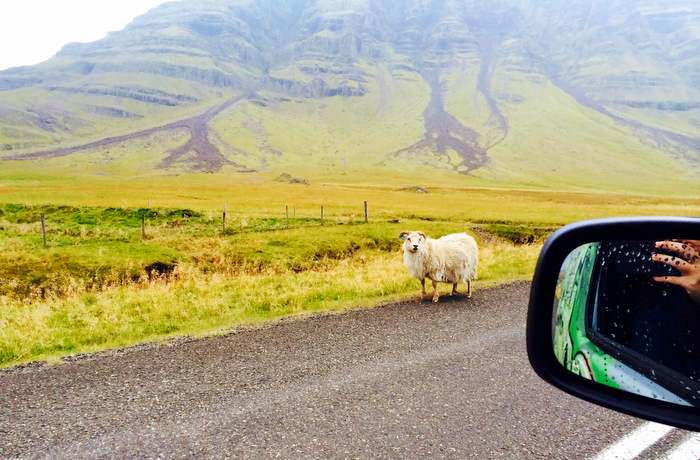
Some typical scenery along the way
Driving tips and staying safe
Iceland is one of the safest countries for travelers, and, thanks to a lack of any predatory land animals, it’s very safe to camp. The biggest danger you’ll need to watch out for is the weather. The weather in Iceland can be extreme and changes quickly; particularly if you are visiting outside of summer (June, July, August), you should pay close attention to the weather forecast.
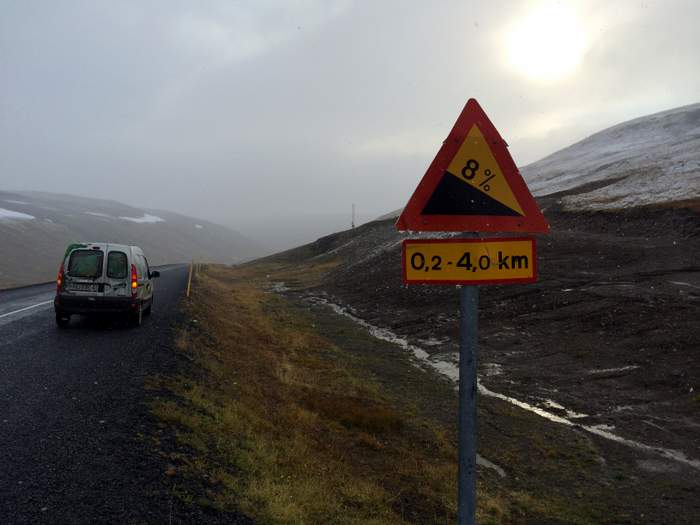
Driving in Iceland means dealing with extreme weather
The other main danger posed to tourists is often their own carelessness. Use common sense when traveling in Iceland. Don’t drive too fast on unpaved roads. Slow down around blind curves. Don’t climb off of marked paths or get too close to the edges of cliffs. Don’t go off-roading (it’s illegal). Be smart, stay safe, and be respectful of the beautiful nature and landscapes you’ve come to see.
Written by and Photos by Katie Hammel for EuropeUpClose.com

JG
Thursday 26th of May 2016
By law you are allowed to camp on publicly owned, uncultivated land for one night provided you leave NO sign of having been there. That means carrying out burned coals, excrement, food-waste… It also these days means you have to know what land is publicly owned, privately owned, owned by farmers cooperatives etc. Even public property has exceptions: National Parks usually have designated camping areas and are hard on wild-campers.
Second: No facilities whatsoever. Wild camping means you don't have access to toilets, showers, a place to get water and a place to dispose of trash.
Third: We locals have a very low tolerance for wild camping. Not only does it break the law, but trespassing and misuse of our nature is becoming an issue and we don’t really look kindly at it.
There are dozens if not hundreds of campsites around Iceland. Typical fee is ISK 1000 per person per night. Included is access to hot and cold water, often showers, power, washing, laundry… Really not worth the hassle to wild-camp.
Please be respectful when visiting Iceland. Please always use campsites.
Terri Fogarty
Thursday 26th of May 2016
I agree. Wild camping has proven to be a big problem in Iceland.
JG
Wednesday 25th of May 2016
There is an important error in this post. Wild camping is not allowed in Iceland. The laws changed in 2013 and travelers must use campsites. Please correct this error as numerous tourists are being misinformed and could break the law.
Tina
Saturday 21st of May 2016
This is one of my bucket list items … thanks for setting my imagination on fire!